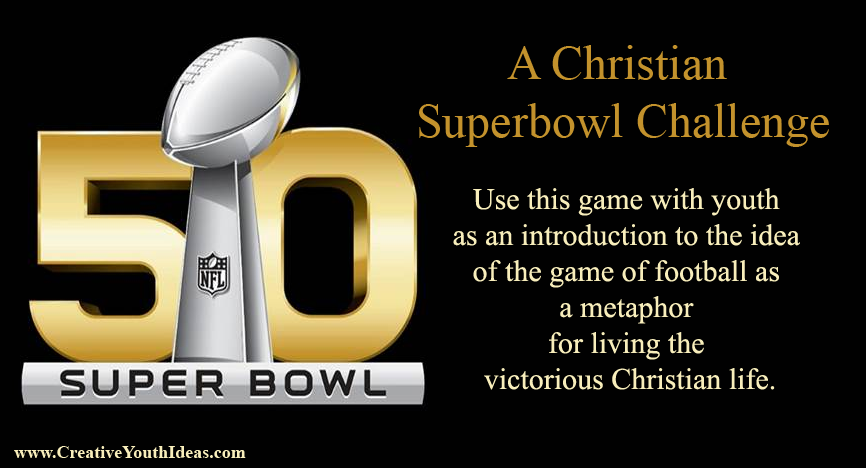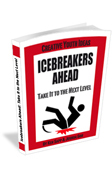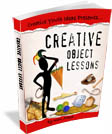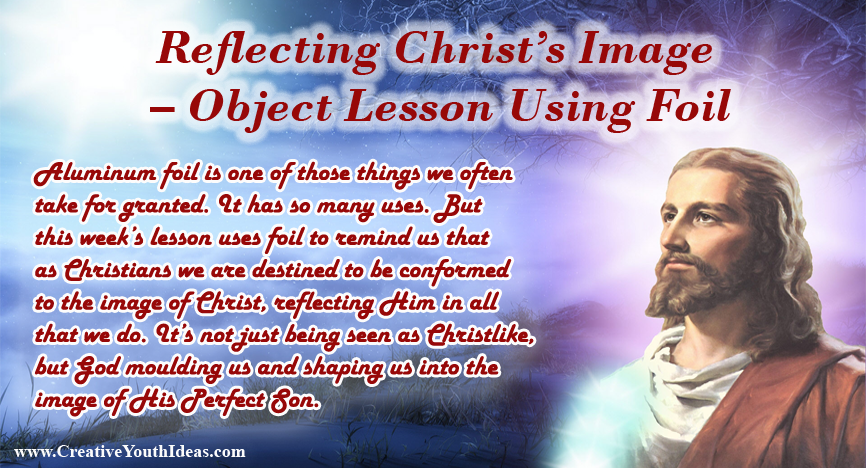
INTRODUCTION TO THE OBJECT LESSON ON TEMPTATION
This simple game serves as a Creative Teaching Idea and discussion starter and Object Lesson on the topic of temptation. Youth will learn how to handle the temptations that are a normal part of life.
A. TRIVIA
The is a variation of a game commonly known as “Pitching Pennies.” In the traditional version of the game, players take turns to throw a coin at a wall. The coin which lands closest to the wall is the winner. The winner collects all the losing players’ tossed coins. Ancient Greek children played a similar game using bronze coins. In modern Israel a version of the game is played with Apricot kernels, and called “Gogoim”. This game is also known by other names: Pigeon Toss, Britain Pap, Penny Up, Keeley, Pitch and Toss, Chucks, Tinks or Jingies.
B. WHAT YOU NEED
- Coins for each youth
- Prize for the winner.
- Tape to mark the boundaries.
C. GAME PLAY
- Put a line across the floor on each side of the room.
- Give each youth a coin and ask them to line them up on one side of the room.
- Demonstrate from a specific distance a toss of a coin toward the goal. Do not give them any strategy. Do not tell them how to play. Only demonstrate the game.
- Hype up the prize for the person who can toss the coin closest to the line without going over it.
- Then let everyone have an opportunity to try. If there is time, you can let them try more than once.
- Award the prize to the winner
D. SAFETY PRECAUTIONS
If playing with younger children, there is a danger of children swallowing a coin. For safety reasons, you play the game with a golf ball, a tennis ball or another object. Older youth can play with marbles, checkers, washers, buttons or any other objects available.
TAKE IT TO THE NEXT LEVEL
DEBRIEF
As you were playing this game,
- What was your goal or objective?
- What was your strategy?
- What are the possible risks with your strategy?
- Did you follow your own strategy or learn from others?
- What is the best way to guarantee you will not cross over the line (i.e. the boundary)?
MAKE IT SPIRITUAL
- Starting in Genesis 1 and continuing throughout Scripture, God gave us boundaries for what we should and should not do. What are some of those boundaries?
– Related to our thoughts
– Related to our feelings
– Related to our bodies
– Related to our words
– Related to our decisions
– Related to our actions - What is temptation?
- What are some things that tempt youth today?
- In this game, the objective was to get as close to the line as possible without crossing over? Sometimes, youth, adults, and even children have a similar mindset when dealing with temptations. We want to get as close to the boundary as possible without crossing over. Why is this strategy dangerous?
MAKE IT PRACTICAL
How do we manage our boundaries and temptations and avoid crossing the line into sin?
THREE PRINCIPLES (I CORINTHIANS 6)
- The Help Principle (6:12a). Some things, even if they are within the boundaries of the law of God, are to be avoided simply because they do not build up the individual toward spiritual maturity or because they do not help others.
- The Habit Principle (6:12b). Some things are wrong because they are habit-forming. They take control over a person’s life. [II PETER 2:19 – “a man is a slave to whatever has mastered him”] ROMANS 6:16 – “Don’t you know that when you offer yourselves to someone to obey him as slaves, you are slaves to the one whom you obey–whether you are slaves to sin, which leads to death, or to obedience, which leads to righteousness?”
- The Holiness Principle (6:15-20). – Some things are wrong for the believer simply because they do not honor or please God.
SEVEN QUESTIONS
- Would Jesus put his name on this for a stamp of approval? (Colossians 3:17)
- Does this fall into the classification of good thinking? (Philippians 4:8)
- Will this degrade or defile the temple of the Holy Spirit? (I Corinthians 6:19) Does this have the “smell” of evil on it? (1 Thessalonians 5:22)
- Will this sooner or later make a slave out of me? (I Corinthians 9:27)
- Is it spiritually beneficial or does it have the potential to control me? (1 Corinthians 6:12)
- Does it benefit others? (Romans 15:1-2; Philippians 2:3)
- Will my indulgence in this prevent someone from accepting Christ as Savior or tend to weaken someone’s faith? (I Cor. 8:9-13)
Remember what Paul says in Romans 14:22 “Happy is he that condemns not himself in that thing that he allows.”
MAKE IT PERSONAL
- Of those temptations of youth we mentioned previously, which are most difficult for you?
- What steps can you learn from this lesson to avoid crossing the line from temptation into sin?
- Say a prayer for God to show you a) ways to FLEE from your personal temptations, b) show you holy things on which you can FOCUS your thoughts, energy and time in pursuit, and c) to give you good Christian friends who are also seeking purity in their relationship with God.
TOUCH POINTS
- We often imitate what we see others do rather than seek guidance from God and God’s Word.
- If we don’t set our own goals, someone will set our goals for us. Satan’s goal for us is self-destruction.
- In temptation we often want to clearly know the boundaries so that we can get as close to the boundary as possible. God’s goal in setting boundaries is not so that we can get as close to those boundaries as possible, but so that we know where they are and can keep a safe distance.
- Sometimes things do not turn out as we planned. When we are trying to get so close to the boundaries the chances of us crossing over are very high. (e.g. In this game sometimes the coin lands on the edge and rolls, sometimes we underestimate distance, strength, or how slippery the floor is.)
- To get as close to the boundary as possible is the wrong objective. We should seek to stay as far from temptation as possible to avoid crossing over into sin.
- The hype of temptation may be greater than what we actually receive. It may be enjoyable but it is fleeting and the more we get of it, the less satisfying it becomes.
- No one said you had to toss the coin. You just followed an example. The way to ensure we do not cross the boundary is to remain in control and set our own boundaries a safe distance away from sin.
- We need to recognize that we are drawn toward sin. (James 1:14)
- A key to handling temptation is mention by Paul to Timothy in 2 Timothy 2:22:
A) Flee – Flee the evil desires of youth
B) Focus – pursue righteousness, faith, love and peace and
C) Fellowship – along with those who call on the Lord out of a pure heart.
ILLUSTRATIONS
- In the comic strip “Cathy”, Cathy loves candy. In one story line, Cathy is trying to avoid the temptation of eating candy:
Cathy goes for a drive to get her mind off the temptation of eating candy.
She thinks, “I’ll go for a drive, but I won’t stop at the grocery store.
Next frame, “I’ll drive past, but I won’t stop.”
Next frame, “I’ll stop, but I won’t go inside.”
Then, “I’ll go inside, but I won’t go down the candy aisle.”
“I’ll go down the candy aisle, but I’ll just look. I won’t pick up any candy.”
“I’ll pick up the candy, but I won’t buy it.”
“I’ll buy it but I won’t open it.”
“I’ll open it, but I won’t smell it.”
“I’ll smell it but not taste it.”
“I’ll taste it but not eat it.”
Then in the last frame “EAT EAT EAT EAT”
So much for avoiding temptation.
Too often, we deal with temptation in the same way as Cathy… getting closer and closer until we can no longer resist and yield to the temptation.
a. If you were to design a similar comic strip with one of those temptations we mentioned that youth of today face, what might be some of the steps in the process of a youth being lured to indulging in the temptation?
b. In each of these real-life scenarios that youth of today face, what could be done differently? How could we break the cycle at different stages in the temptation?
- The boy was standing near an open box of peanut butter cookies.
“Now then, young man,” said the grocer as he approached the young boy.
“What are you up to?”
“Nothing,” replied the boy: “Nothing.”
“Well it looks to me like you were trying to take a cookie.”
“Oh you’re so wrong, mister, …. I’m trying not to!”
SCRIPTURE
- 2 Timothy 2:22 – “Flee the evil desires of youth and pursue righteousness, faith, love and peace, along with those who call on the Lordd out of a pure heart.”
- 1 Corinthians 6:12 – “I have the right to do anything,” you say–but not everything is beneficial. “I have the right to do anything”–but I will not be mastered by anything.”
- 1 Corinthians 8:9-13 – “Be careful, however, that the exercise of your rights does not become a stumbling block to the weak. For if someone with a weak conscience sees you, with all your knowledge, eating in an idol’s temple, won’t that person be emboldened to eat what is sacrificed to idols? So this weak brother or sister, for whom Christ died, is destroyed by your knowledge. When you sin against them in this way and wound their weak conscience, you sin against Christ. Therefore, if what I eat causes my brother or sister to fall into sin, I will never eat meat again, so that I will not cause them to fall.””
- 1 Corinthians 9:27 – “No, I strike a blow to my body and make it my slave so that after I have preached to others, I myself will not be disqualified for the prize.”
- 1 Corinthians 10:13 – “No temptation[a] has overtaken you except what is common to mankind. And God is faithful; he will not let you be tempted beyond what you can bear. But when you are tempted,[c] he will also provide a way out so that you can endure it.”
- 1 Thessalonians 5:22 – “reject every kind of evil.”
- Colossians 3:17 – “And whatever you do, whether in word or deed, do it all in the name of the Lord Jesus, giving thanks to God the Father through him.”
- Galatians 5:1 – “Stand fast therefore in the liberty with which Christ has made us free, and do not be entangled again with a yoke of bondage.
- James 1:13-16 – “When tempted, no one should say, “God is tempting me.” For God cannot be tempted by evil, nor does he tempt anyone; but each person is tempted when they are dragged away by their own evil desire and enticed. Then, after desire has conceived, it gives birth to sin; and sin, when it is full-grown, gives birth to death. Don’t be deceived, my dear brothers and sisters.”
- James 4:7 – “Therefore, submit to God. Resist the devil and he will flee from you.”
- James 4:17 – “If anyone, then, knows the good they ought to do and doesn’t do it, it is sin for them.”
- Philippians 2:3 – “Do nothing out of selfish ambition or vain conceit. Rather, in humility value others above yourselves, not looking to your own interests but each of you to the interests of the others.”
- Philippians 4:8 – “Finally, brothers and sisters, whatever is true, whatever is noble, whatever is right, whatever is pure, whatever is lovely, whatever is admirable—if anything is excellent or praiseworthy—think about such things.”
- Proverbs 17:27 – “The one who has knowledge uses words with restraint, and whoever has understanding is even-tempered.”
- Romans 6:12-14, 22 – “Therefore do not let sin reign in your mortal body, that you should obey its lusts. And do not present your members as instruments of unrighteousness to sin, but present yourselves to God as being alive from the dead, and your members as instruments of righteousness to God.” “But now having been set free from sin, and having become servants to God, you have your fruit of holiness, and the end, everlasting life.”
- Romans 13:14 – “Rather, clothe yourselves with the Lord Jesus Christ, and do not think about how to gratify the desires of the flesh.”
- Romans 14:22-23 – “So whatever you believe about these things keep between yourself and God. Blessed is the one who does not condemn himself by what he approves. But whoever has doubts is condemned if they eat, because their eating is not from faith; and everything that does not come from faith is sin.”
- Romans 15:1-2 – “We who are strong ought to bear with the failings of the weak and not to please ourselves. Each of us should please our neighbors for their good, to build them up.”
INTERESTING QUOTES RELATED TO TEMPTATION
- “If thou wouldst conquer thy weakness, thou must never gratify it. No man is compelled to evil: his consent only makes it his. It is no sin to be tempted, but to be overcome.” – William Penn
- “Our minds are mental greenhouses where unlawful thoughts, once planted, are nurtured and watered before being transplanted into the real world of unlawful actions… These actions are savored in the mind long before they are enjoyed in reality. The thought life, then, is our first line of defense in the battle of self-control.” – Jerry Bridges
- “Every time I say ‘no’ to a small temptation, I strengthen my will to say ‘no’ to a greater one.” – Mother Angelica
- “He who chooses the beginning of the road chooses the place it leads to. It is the means that determines the end.” – Harry Emerson Fosdick
- “He who chooses the beginning of the road chooses the place it leads to. It is the means that determines the end.” – Harry Emerson Fosdick
- “In the last analysis it is not the temptations that meet us on the streets that determine our conduct; it is the heart of the man who faces them. Two men may face the same conditions; one falls, the other stands. The difference is not in the temptation but in the heart of the man.” – Martyn Lloyd-Jones
- “The first degree [of temptation] relates to the mind – it is dragged away from its duties by the deceit of sin. The second aims at the affections – they are enticed and entangled. The third overcomes the will – the consent of the will is the conception of actual sin. The fourth degree disrupts our way of life as sin is born into it. The fifth is the flesh’s goal, a hardened life of sin, which leads to eternal death (James 1:14-15).” – Kris Lundgaard
- “Temptations, of course, cannot be avoided, but because we cannot prevent the birds from flying over our heads, there is no need that we should let them nest in our hair.” – Martin Luther
- “It’s easier to avoid temptation then to resist it.” – Bill Shannon
- “It’s easier to resist temptation at a distance than when it is near.” – Unknown
![]() MORE IDEAS? See “Creative Object Lessons”
MORE IDEAS? See “Creative Object Lessons”
A 200-page e-book that explains everything you need to know when planning your very own object lessons. It contains 90 fully developed object lesson ideas and another 200 object lesson starter ideas based on Biblical idioms and Names / Descriptions of God.











